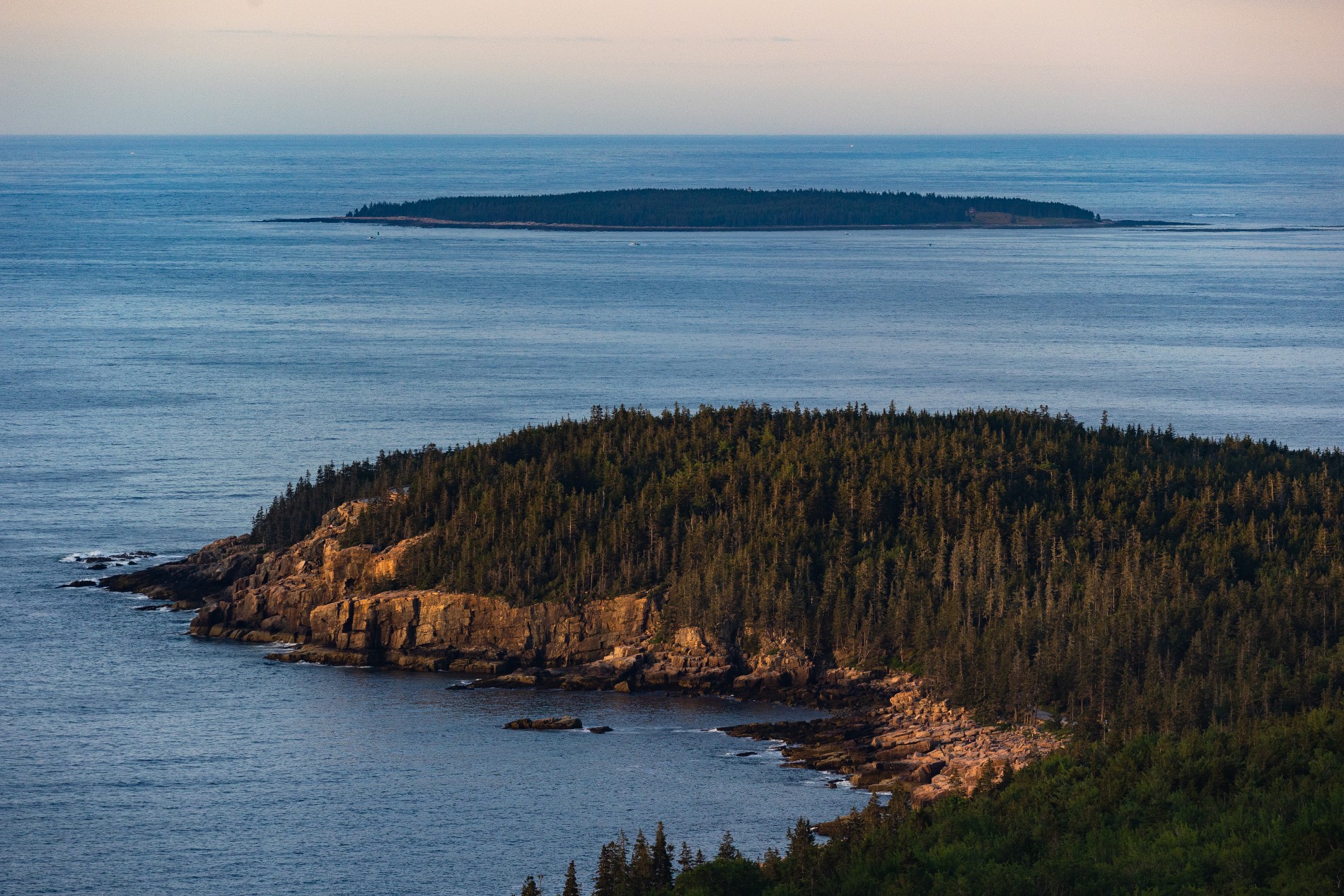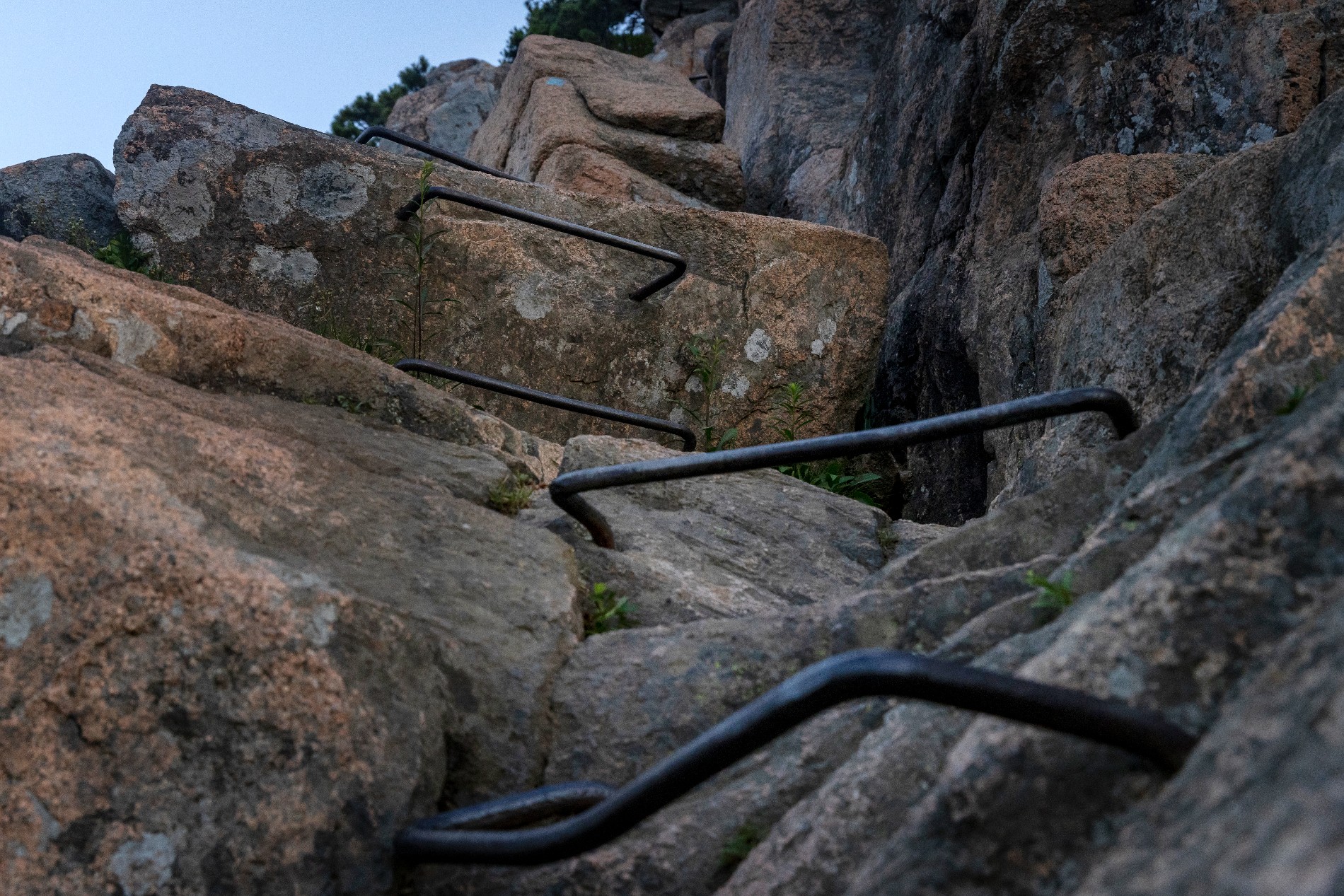The Acadia You May Not Know
An inside look at what it takes to manage this archipelago.
September 29th, 2024
An inside look at what it takes to manage this archipelago.
September 29th, 2024
BY LYNN FANTOM
Acadia’s glaciated coastline and island landscape, abundance of habitats, and rich cultural heritage make it one of the most popular parks in the country. Acadia is consistently ranked in the top 10 most visited national parks, with about 4 million annual visits in recent years.
Whether you’re a first-time or frequent visitor of Acadia, a seasonal or year-round resident of one of its surrounding communities, or a Friends of Acadia member or volunteer, there is always something to learn about this national park and what it takes to manage and protect it.
Acadia is a relatively small national park, protecting about 50,000 acres, but it is super complex according to John Kelly, an expert in environmental planning and outdoor recreation who serves as management assistant for the park.
“It is an expensive place to manage because of the staffing and infrastructure we need to host visitors,” Kelly said.
First, Acadia isn’t all in one place, but instead is located on different parts of Mount Desert Island, the Schoodic Peninsula, Isle au Haut, and 18 smaller islands.
It features 26 mountains (including the tallest on the eastern seaboard), as well as rocky ocean coastline, streams, lakes, ponds, wetlands, and glacial formations.
 Acadia’s protected lands include conservation easements on more than 120 islands stretching across 50 miles of coastline. The park’s conservation easements protect natural, cultural, and scenic resources on about 12,500 acres of private land, but do not allow public access.
Acadia’s protected lands include conservation easements on more than 120 islands stretching across 50 miles of coastline. The park’s conservation easements protect natural, cultural, and scenic resources on about 12,500 acres of private land, but do not allow public access.
Acadia’s complex boundary totals 220 miles. By comparison, Yellowstone protects 2.2 million acres, but with a simpler rectangular boundary that adds up to about 234 miles.
Included in Acadia’s sum are about 100 miles of lake and marine shoreline boundary.
It takes a diverse team of scientists, resource managers, and skilled workers—trail crews, road specialists, electricians, plumbers, heavy equipment operators, carpenters, masons, water and wastewater operators, mechanics—just to maintain it.
And all so you can simply enjoy it.
Pointing to the National Park Service (NPS) mission to protect these lands, Chief of Facility Operations and Maintenance Keith Johnston said, “You just don’t run out and fix something without making sure that you’re going to fix it in a way that supports the ecology of the area.”
“Best results come when you have multiple disciplines all communicating together,” added Cultural Resources Program Manager Gail Gladstone. “Project managers, maintenance workers, preservation experts, and environmental experts all contribute to making the soundest decisions about maintaining the park.”
But just getting crews where they need to go is a challenge. It includes transporting both people and equipment to the offshore islands. Last year, a new larger and more fuel-efficient boat was donated by Friends of Acadia. (You may have been among the people who helped fund it through the Paddle Raise at the Annual Benefit. Thank you.)

What many people also don’t know is that Acadia was created largely through the donation of land tracts by individuals, who championed preservation of this landscape. The result is complex boundaries and an irregular patchwork of park lands interspersed among private properties and 10 local towns.
In fact, the park is a neighbor of some 1,000 landowners, who literally have a national park in their backyard. Being a good neighbor requires National Park Service investments of time, care, and expertise. This might mean, in a clearing operation, for example, ensuring that park trees don’t fall onto someone’s property.
“We don’t always get it right, but we do try. It does require a lot of communication,” said Johnston, who himself is a mechanical engineer. “Resource protection rangers have to understand where the park’s boundary is and what those differences in jurisdiction are in order for them to manage,” added Acadia’s Chief of Resource Management Rebecca Cole-Will.
In fact, resource managers at the park have been exchanging information and working with boundary neighbors since 2015 to combat invasive species. Last year, they teamed up with neighbors, the Mount Desert Land & Garden Preserve and Somes-Meynell Wildlife Sanctuary, to combat hemlock woolly adelgid—the invasive insect attacking hemlock trees.

Moss covers the slope next to the Sluiceway Trail in Acadia National Park. (Photo by Lily LaRegina/Friends of Acadia)
Bordering water adds challenges, too. Right now, for example, a specialized masonry crew is cleaning and adding new mortar to the stonework of the triple-arched Otter Cove Causeway Bridge, which was completed in 1939 and is one of the most impressive structures along the Park Loop Road.
“The crew has to contend with the tide coming in and out. They can only work at low tide and, even then, have had to develop a method for keeping water out of the barrel they are working on,” said Gladstone, who is collaborating with Johnston’s team on the project. They use marine grout, which holds up in extreme saltwater conditions—but dries so fast they must work quickly.
Two years ago, another bridge was the focus of cultural resource preservation. Over $3 million was invested in Duck Brook Bridge, Acadia’s longest and tallest—and the only one that is hollow. The project restored internal walkways used to conduct safety inspections.
One of the challenges for this assignment was a month-long work hiatus to accommodate the peak maternity period for bats that roost under the bridge.

Acadia National Park mason Mike Fitzpatrick checks the integrity of the grout at the Amphitheater Bridge in Acadia National Park. (Photo by Ashley L. Conti/Friends of Acadia)
Acadia abounds in complex infrastructure, much of which is listed in the National Register of Historic Places, including 33 miles of scenic motor roads, 45 miles of carriage roads, 17 stone bridges, three lighthouses, two historic gate houses—and even the 158 miles of hiking trails, designated in 2022.
“We don’t manage just for visitors. We manage for resources, both cultural and natural,” said Kelly. So, trails are temporarily closed for peregrine nesting.
Certain islands are entirely closed to the public to protect birds. Seal Cove Road was renovated with an open-bottom culvert, so the beavers could continue to do their damming and the road wouldn’t wash out. “The beavers are extremely happy over there,”
Johnston added.
To ensure visitor safety and access, park maintenance crews conduct an annual condition assessment. For example, every year they hike every trail in the park, inspecting stone stairs, stone walls, iron rungs, and ladders.

Iron rungs lead the way up the Beehive Trail in Acadia National Park/(Photo by Ashley L. Conti/Friends of Acadia)
Recently, workers had to build a new radio tower on Cadillac Mountain: ice kept damaging the existing one, but it was too dangerous to climb to repair. Storms have also devastated roads.
Gusts damaged a pier on Isle au Haut, which Johnston’s team reconstructed.
But sometimes the maintenance is as simple—and important—as securing a handrail. “I think the beauty of the work we do is that it’s accomplished in such a way that you don’t know we were there,” says Johnston.
Which brings us to the subject of toilets. “Everyone needs to use a toilet when they come to a park,” said Kelly. In 2023, $7.8 million of funding provided by the Great American Outdoors Act was earmarked to rehabilitate the water and wastewater distribution systems in the Schoodic District. This project will install insulated pipes to prevent freezing during Maine’s cold winters.
And rest areas will continue to be properly stocked. As Johnston’s team once calculated, the toilet paper used by Acadia’s visitors could reach to Mars—and back.
LYNN FANTOM is a former New York advertising executive who has embraced her second career as a freelance writer in Maine.